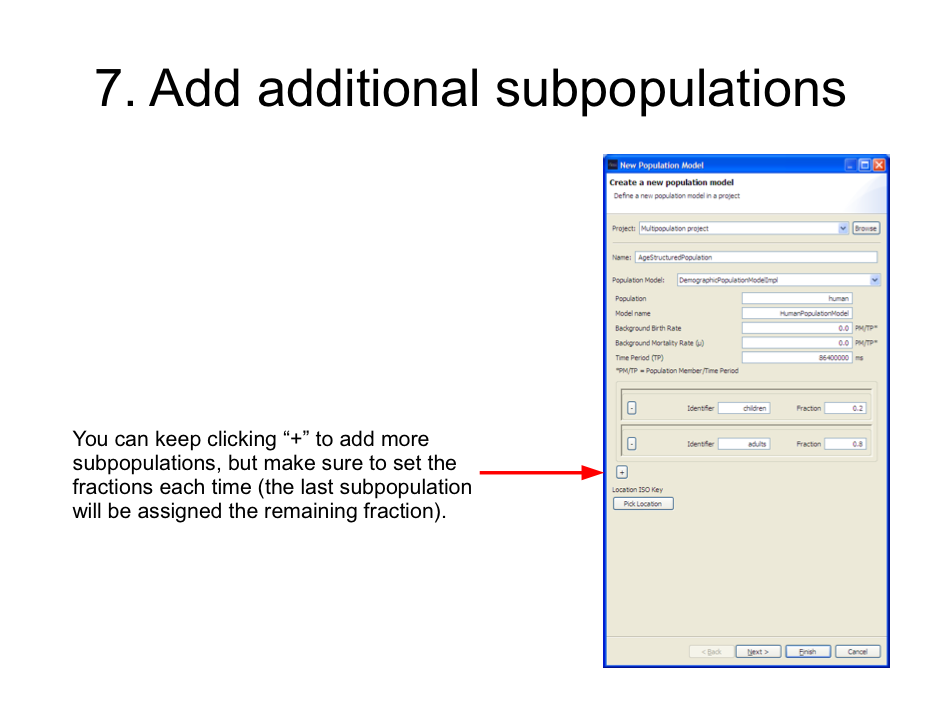Notice: this Wiki will be going read only early in 2024 and edits will no longer be possible. Please see: https://gitlab.eclipse.org/eclipsefdn/helpdesk/-/wikis/Wiki-shutdown-plan for the plan.
Difference between revisions of "Using Structured Populations in STEM"
| Line 1: | Line 1: | ||
| − | The ability to use structured populations in STEM allows users to arrive at a fuller and more accurate understanding of how diseases affect public health. This feature allows modelers to focus in on '''age groups''', '''conditions''', '''gender''', or even '''species''' as they explore issues of concern to public health efforts. | + | The ability to use structured populations in STEM allows users to arrive at a fuller and more accurate understanding of how diseases affect public health. This feature allows modelers to focus in on '''age groups''', '''conditions''', '''gender''', or even '''species''' as they explore issues of concern to public health efforts. |
| + | |||
| + | In the past, for example, seasonal influenza has been more severe among seniors than other age groups. The recent outbreak of H1N1, on the other hand, posed a greater risk for children and adults in their early and middle years more severely than seniors. H1N1 also posed a special risk for pregnant women; users can structure populations to account for conditions such as pregnancy. | ||
| + | |||
| + | Structuring populations by gender can help in understanding sexually transmitted diseases (STDs) such as HIV/AIDS. And structuring populations by species can help in understanding the impact non-human populations (e.g., ducks in Asia, cattle in Britain) may have on human populations. | ||
| + | |||
| + | In an increasingly globalized world, asking and answering such questions can be critical to public health and welfare. | ||
Revision as of 17:02, 26 April 2010
The ability to use structured populations in STEM allows users to arrive at a fuller and more accurate understanding of how diseases affect public health. This feature allows modelers to focus in on age groups, conditions, gender, or even species as they explore issues of concern to public health efforts.
In the past, for example, seasonal influenza has been more severe among seniors than other age groups. The recent outbreak of H1N1, on the other hand, posed a greater risk for children and adults in their early and middle years more severely than seniors. H1N1 also posed a special risk for pregnant women; users can structure populations to account for conditions such as pregnancy.
Structuring populations by gender can help in understanding sexually transmitted diseases (STDs) such as HIV/AIDS. And structuring populations by species can help in understanding the impact non-human populations (e.g., ducks in Asia, cattle in Britain) may have on human populations.
In an increasingly globalized world, asking and answering such questions can be critical to public health and welfare.




















